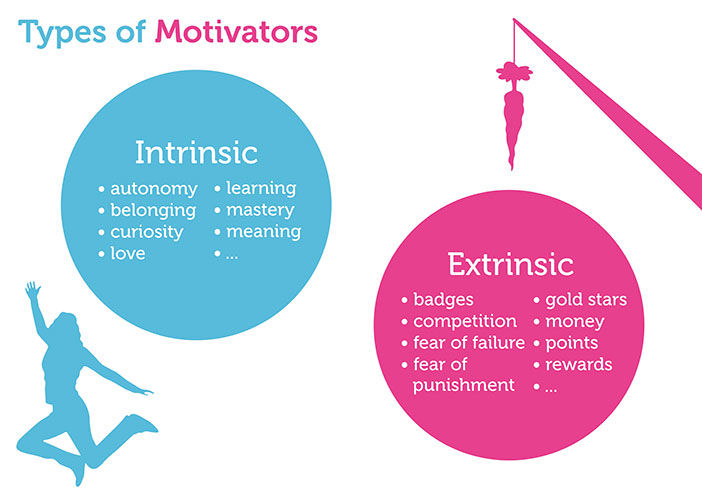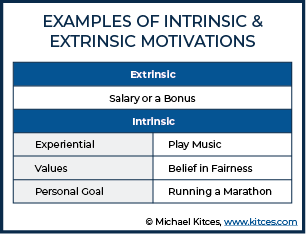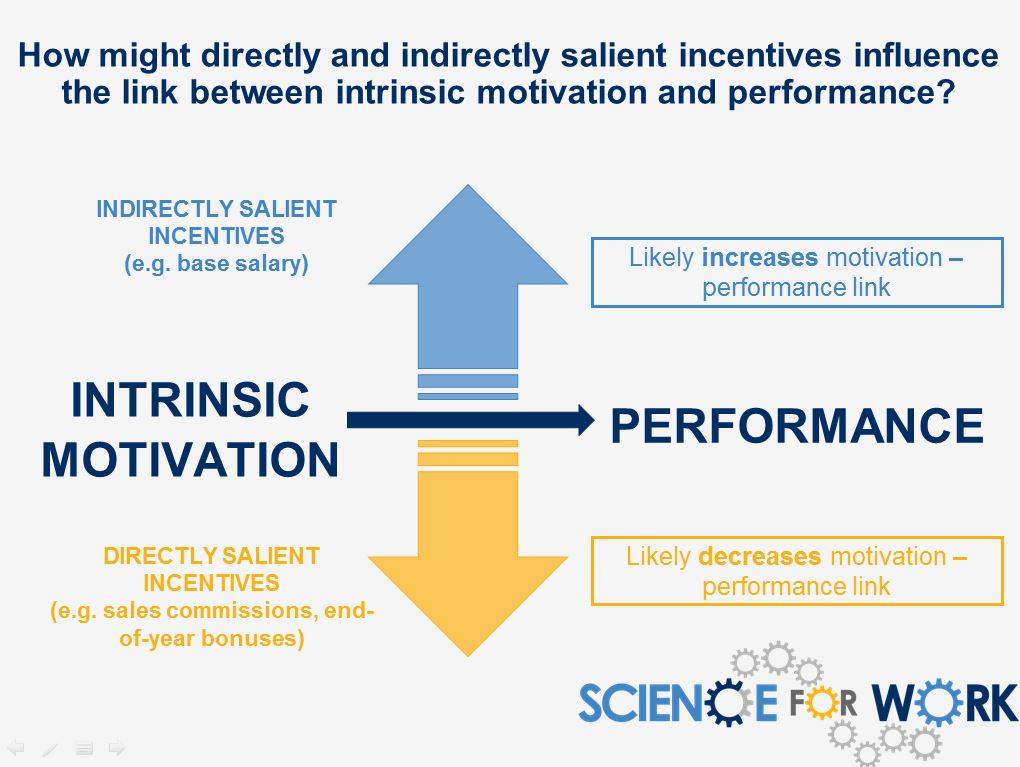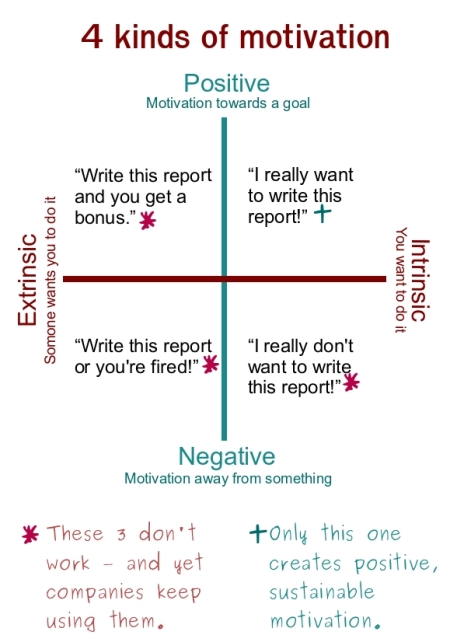Intrinsic And Extrinsic Motivation Examples In The Workplace
/2795384-differences-between-extrinsic-and-intrinsic-motivation-5ae76997c5542e0039088559.png)
For example performing at work is driven by compensation.
Intrinsic and extrinsic motivation examples in the workplace. Competing in sports and games for trophies whether you are an athlete going for a gold medal or a restaurant owner going for a michelin star awards of any kind are powerful motivators. How to use internal and external motivation. In order to use motivation in the workplace at its full potential you need to understand the different types of motivation and how they each function in a professional environment. Think of the numerous intrinsic motivation examples in sports such as competitiveness strength energy and the health benefits mental emotional and physical we gain from being active being part of a team and doing something we enjoy.
Here are a few examples that show the difference between intrinsic and extrinsic motivation ok so you get the idea. Intrinsic motivation is the desire to do something even if there isn t an obvious reward. Motivation is a critical element in a successful workplace. For example enjoying what you do and valuing your work as important is an intrinsic goal.
But we may need to rely on it when we are trying to get people to do tasks that don t appeal to them. It is the reason why people take pride in their work and find meaning behind their actions. When it comes to motivation there are two types. Most people assume intrinsic motivation is better than extrinsic motivation.
But as you ll see in a sec this isn t always true. By constantly offering extrinsic motivation individuals focus more on the short term reward and less on the long term benefits. Extrinsic motivation doesn t appear useful at least not in the short term. But that leads us to another question.
Extrinsic motivation is common and it drives most workers to perform job duties. The following are examples of extrinsic and intrinsic motivation techniques to use in the workplace. The examples of intrinsic and extrinsic motivation given above explain why both types of motivation are essential and should be in balance. Anything that we are promised for doing the work or anything that we get as a result of doing the.
Extrinsic motivation is any reason we do the work other than the joy of doing the work itself. Extrinsic motivation in the workplace. An example of intrinsic motivation is learning a new skill. Intrinsic means relating to the essential nature of a thing with that in mind intrinsic motivation is what drives a person to do something because they find gratifying interesting or enjoyable.
Intrinsic motivators are a bit tricky. The type of inner motivation that drives one staff member may do nothing for her coworker. Motivation energizes employees inspires progress and pushes teams to excel.



:max_bytes(150000):strip_icc()/2795164-what-is-extrinsic-motivation-5b31542404d1cf0036a91c79.png)










:max_bytes(150000):strip_icc()/2795385-what-is-intrinsic-motivation-5afb187443a1030037f0b2a0.png)



